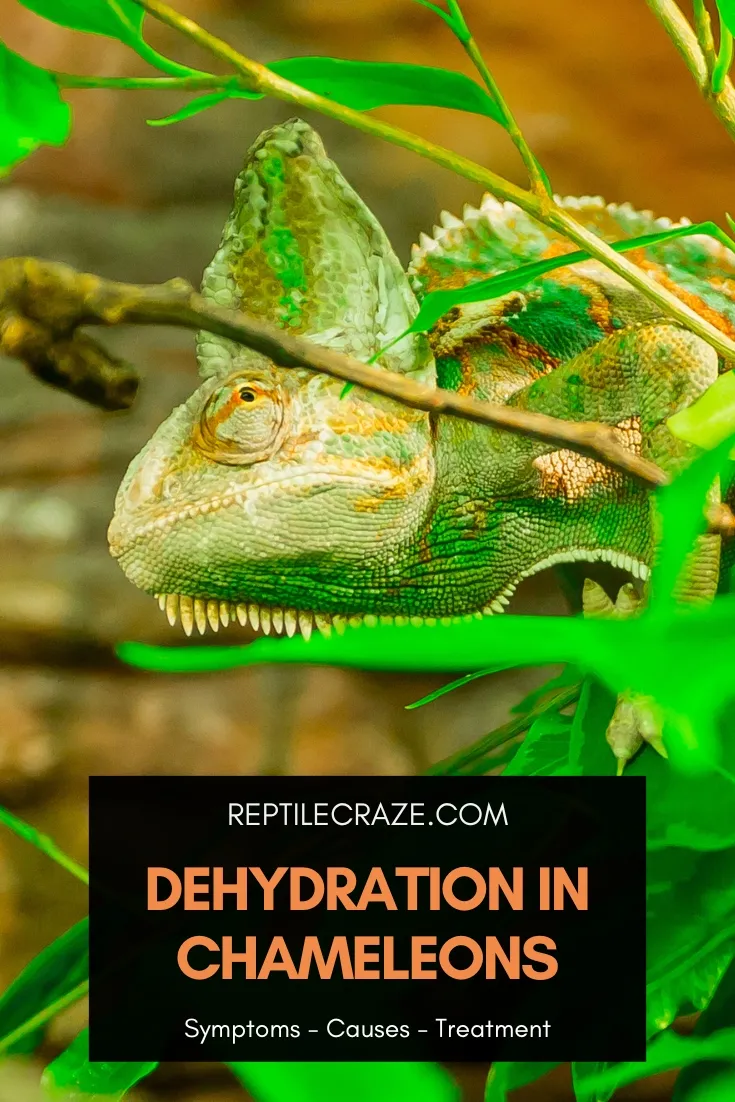
Being a chameleon owner is not for the faint of heart, as anything could go wrong pretty quickly with these reptiles if you fail to provide proper husbandry conditions for them. Did you know that one of the leading causes of death in chameleons is dehydration? Yes, that is right; so, how can you know if your pet is dehydrated?
Signs of dehydration in chameleons include yellow or orange urates, sunken eyes, sagging skin, lack of energy, and/or decreased appetite. When mildly dehydrated, treatment involves a long misting session, giving it some fruits, a shower, and/or using a dropper to give it some water.
This article will show you the symptoms and causes of dehydration in chameleons and how you can rehydrate your chameleon properly. So keep reading to find out everything you need to know about dehydration in chameleons!
Table of Contents
Signs Of Dehydration In Chameleons
Chameleons can start showing signs of dehydration very early, so you need to get to know your chameleon’s behavior and feeding/drinking schedule and keep an eye on them to detect any abnormality early on.
The earlier you treat dehydration in chameleons, the better. So, let us take a look at the signs of dehydration in these reptiles:
1. Sunken Eyes
Chameleons have independently movable eyes and each eye has a cone-shaped scaly lid. Under normal conditions, the eyes should stick out a little bit at the side of their head.
Sunken eyes may mean a chameleon is dehydrated, but only when accompanied by one or more symptoms of dehydration.
If your chameleon has sunken eyes as a stand-alone symptom, then it probably means your pet is stressed or feels threatened.
In any case, having sunken eyes is a warning sign that something may be wrong with your pet, so you need to stay alert and find out the possible reason why this is happening.
2. Yellow Or Orange Urates
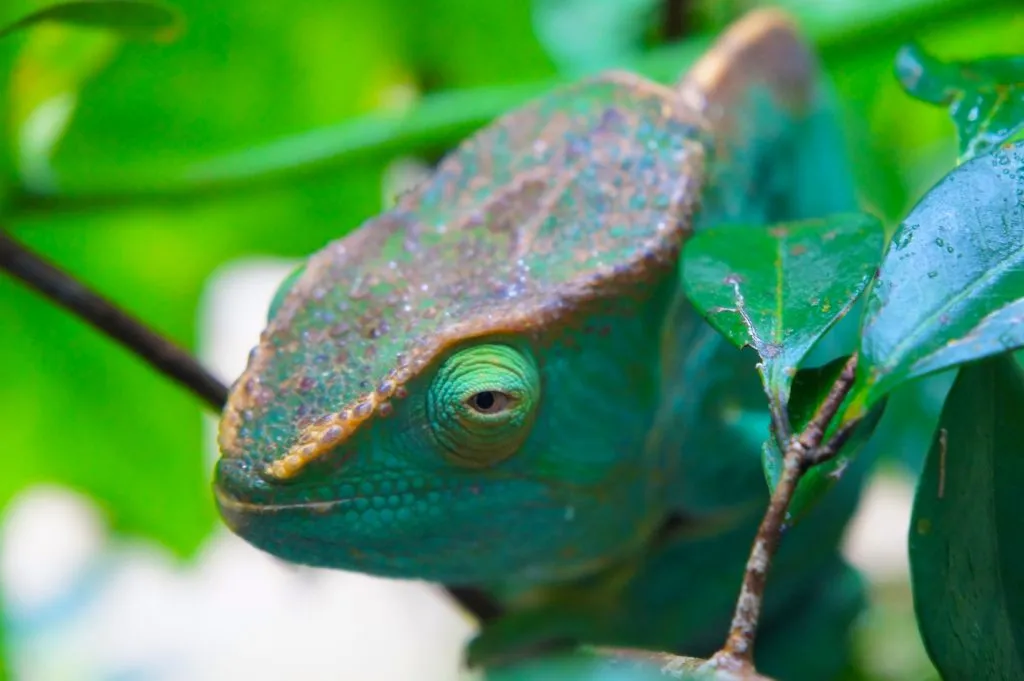
As happens with most animals (and humans) a chameleon’s feces can tell you a lot about its overall health.
It is important to note that chameleons do not urinate as you would normally expect them to do it. Instead, they actually release their liquid waste in the form of a solid substance called urate.
So, the chameleon’s feces and urate are released together through the cloaca and are easily distinguishable from one another; the poop itself is dark brown, and the urate is white or slightly yellow with a soft texture, under normal conditions.
When the urate has a yellow color, it means your chameleon is mildly dehydrated. But if the urate is orange, it means your pet is severely dehydrated and in need of immediate veterinarian assistance.
3. Sagging Skin
A chameleon’s skin should be tight around its body, with no extra skin folds.
If your chameleon seems to have sagging skin, you can perform a simple and quick test called “the loose skin test”.
The loose skin test is done by gently picking up your chameleon and gently pinching the skin of its back or side using your thumb and index fingers. Then, you are going to release the skin and notice how fast it bounces back to normal.
If your chameleon’s skin stays “pinched” and does go back to normal, but slowly, it means your pet is indeed dehydrated.
If on the contrary, the skin bounces back to normal fairly quickly and does not stay pinched for more than one or two seconds, it means your pet is well hydrated.
4. Lack Of Energy
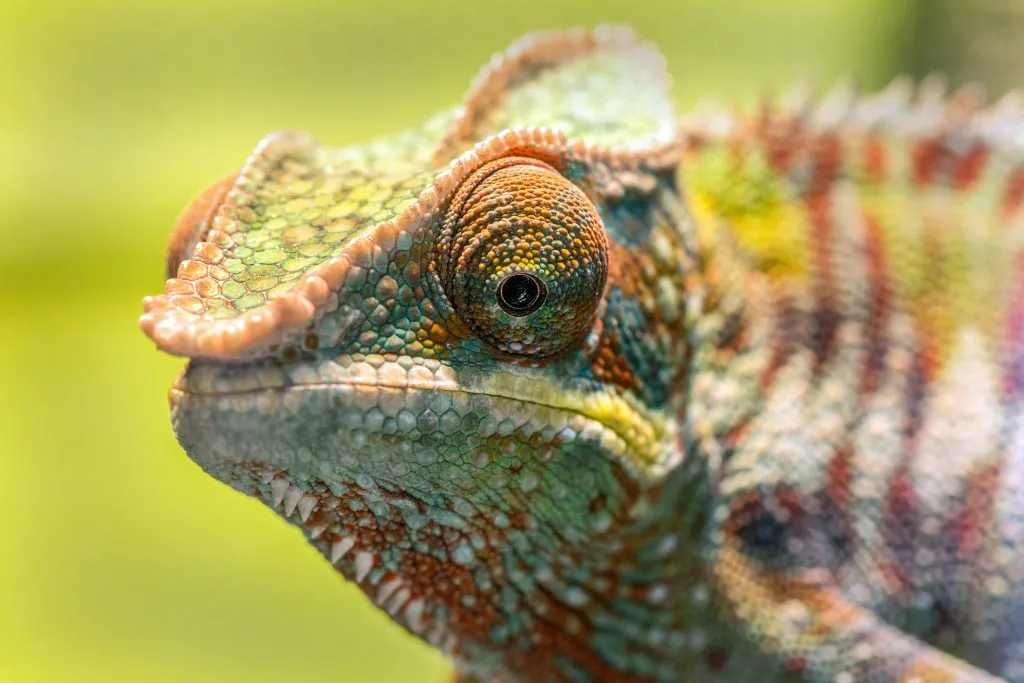
If you notice your chameleon is lethargic, does not want to move around as usual, and seems fatigued, then it could mean it is sick or dehydrated.
In some cases, the chameleon may stick to the lower branches or even stay on the floor of the enclosure instead of climbing as they normally do.
A chameleon that does not have enough energy to move won’t be able to drink. So, a cycle starts where the more dehydrated the chameleon is, the less energy to drink it has.
5. Refusal To Eat
Usually, when a chameleon refuses to eat, it also means that it will get dehydrated too.
You cannot treat a dehydrated chameleon at home if it is also refusing to eat, because one of the ways to rehydrate your pet is by offering it fruits rich in water in order to reintroduce some liquids into its diet.
Besides, if you notice your pet’s appetite has decreased or your chameleon is plainly refusing to eat, then it could be a sign of a more serious health problem.
So, if your chameleon is refusing to eat, you will need to take it to a reptile vet immediately for further evaluation.
Tip: If you chameleon is not eating, read our article on that here. It shows you the various reasons why chameleons may stop eating and what you can do to change that.
Causes of Dehydration in Chameleons
Dehydration in chameleons usually happens due to inappropriate husbandry conditions. However, some illnesses can also cause your chameleon to get dehydrated.
The most frequent causes of dehydration in chameleons include:
1. Lack Of Appropriate Hydration Sources
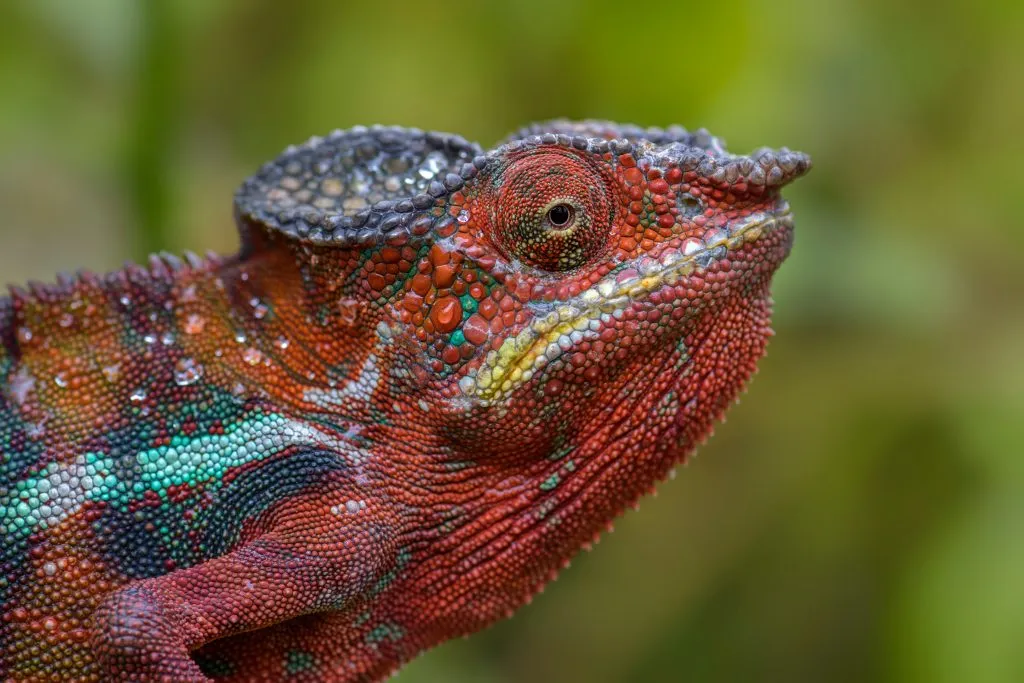
Chameleons are not able to notice still water, so putting a water bowl in the enclosure won’t do any good to prevent your pet from getting dehydrated.
In the wild, chameleons drink water from droplets that form in the leaves of plants and trees, so your aim should be focused on trying to mimic that environment as best as you can.
Therefore, the best way to encourage your pet to drink water is by installing a drip system in the enclosure. This one from Exo Terra is a good option.
Always keep in mind that the water should fall slowly and form droplets on the leaves or any object where your chameleon can easily lap it off.
When using a drip system, remember to place a dish at the bottom of the enclosure so it can catch the remaining water falling from the leaves, and also make sure to empty said dish on a regular basis.
Using constantly running drip systems is not recommended since chameleons do not like drinking from flowing water, and besides the humidity in the enclosure can get too high when using such a system.
2. The Humidity Is Too Low
You should mist the leaves of the plants in your chameleon’s enclosure at least once or twice per day in order to keep appropriate humidity levels. You could also set up an automatic misting or fogging system.
The humidity levels in the
Take into consideration that higher humidity levels may cause respiratory problems to your chameleon, while lower humidity levels can contribute to them getting dehydrated.
So, make sure to research the appropriate humidity settings for your specific species of chameleon.
3. The Temperature Is Too High
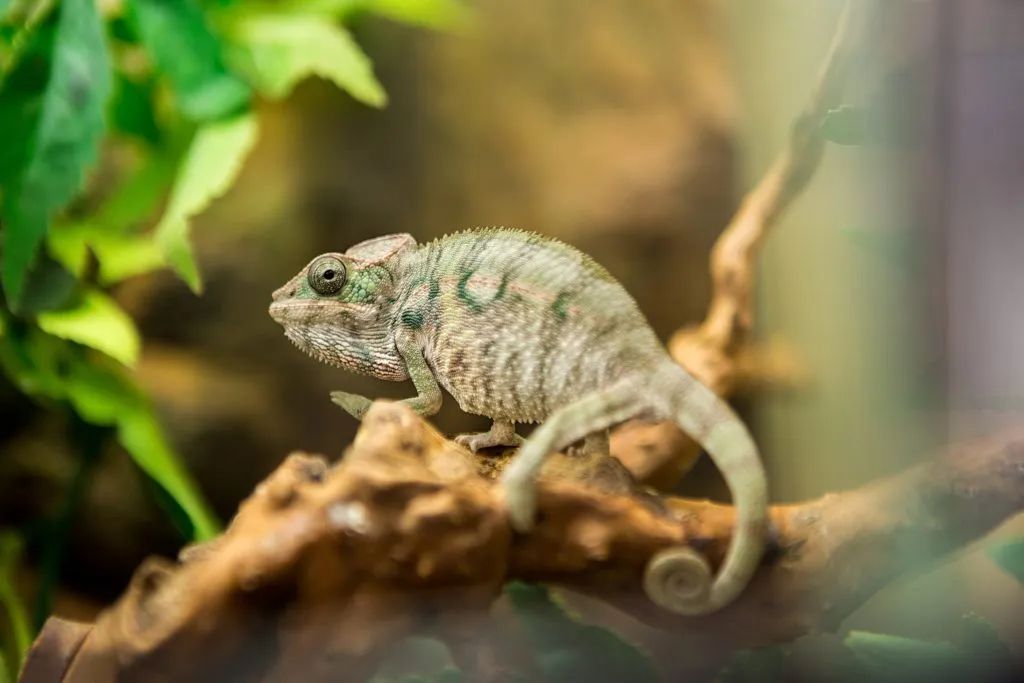
Too high temperatures will cause a quicker evaporation rate of the water you mist into the enclosure, which can cause stress and dehydration in your pet.
The daytime ambient temperature in the enclosure can range from 68 °F (20 °C) to 82 °F (28 °C) depending on the species of your chameleon.
To properly monitor the temperature settings, it is essential that you keep a thermostat, and a couple of thermometers placed at each end of the enclosure.
4. Your Chameleon Is Sick
Several health problems can lead to your chameleon having a decreased or complete lack of appetite, which can also affect their desire to drink water.
A chameleon that is not eating or drinking will inevitably end up dehydrated.
Dehydration can happen faster if your pet is sick with parasites or an infection that is causing them to have diarrhea or gastrointestinal problems. (Read this article if your chameleon has diarrhea!)
So, if you suspect your chameleon may be dehydrated due to illness, do not attempt to treat it at home and take them to the reptile vet for further evaluation.
Tip: If you think that your chameleon is sick or might even be dying, read our article on that here! It will show you how to spot the symptoms and how to help.
How To Treat Dehydration In Chameleons
If you notice signs of mild dehydration, your pet is not lethargic, and it still has a good appetite, you can try to rehydrate it from home. Otherwise, it is better if you take it to a reptile veterinarian.
Here is a list of the things you can try at home to rehydrate your chameleon:
1. Mist The Enclosure
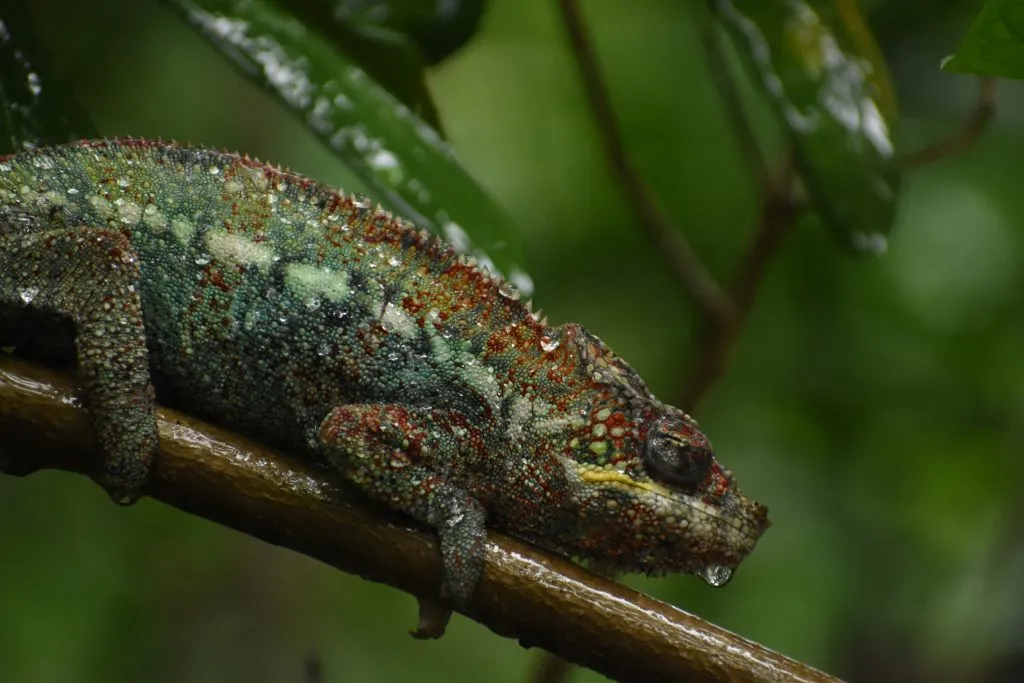
A thorough misting should be the first step you take to rehydrate your chameleon, and in most cases is the only one necessary to nurse your pet back to health.
Make sure to completely drench the enclosure and plants, just make it seem like the rainy season has started!
A 15 to 20 minutes misting session should be enough to start.
Then, place your chameleon on a perch near a leave or object full of water droplets and stay close to see if they start drinking and keep track of how much they drink.
Be aware that you will need to dry out the enclosure after a while, having constantly wet branches may lead to unhygienic living conditions and can even cause some health problems like foot infections in your pet.
If you don’t know what mister to use, this one from Exo Terra is a great option.
2. Give Your Chameleon A Shower
If you feel like a long misting session was not enough to rehydrate your chameleon, you can try taking it out of the enclosure and putting it in your bathroom to give it a shower.
To do this, first, secure a perch to your shower, and make sure it can’t accidentally fall as this can seriously hurt or even kill your pet.
Alternatively, you can also put a whole potted natural or fake plant in the shower where your chameleon can safely hold onto it.
Next, turn on the shower and direct the spray to one of the walls, so it can never hit your chameleon’s body directly. You want your pet to just get lightly splashed by the water that bounces back from the wall.
Make sure the water is not too hot nor too cold as this can throw off your pet’s body temperature, instead it should feel slightly warm.
Never leave your pet alone or with a child when giving it a shower, and never get in the shower with them. Getting in contact with soap, shampoo, bath salts, or other products that are commonly kept in the shower can be harmful to your pet.
Showers should only be given to adult chameleons. Never get a baby or juvenile chameleon in the shower, as they can easily drown by accident.
Keep in mind that showers can stress some chameleons, so don’t do it often, and always keep an eye on them. A 30 to 45 minutes shower session should be enough in most cases.
Remove your pet from the shower if you notice it is getting agitated or if it is starting to show signs of stress like skin darkening, puffing, or rapidly changing colors.
3. Offer Some Fruits To Your Chameleon
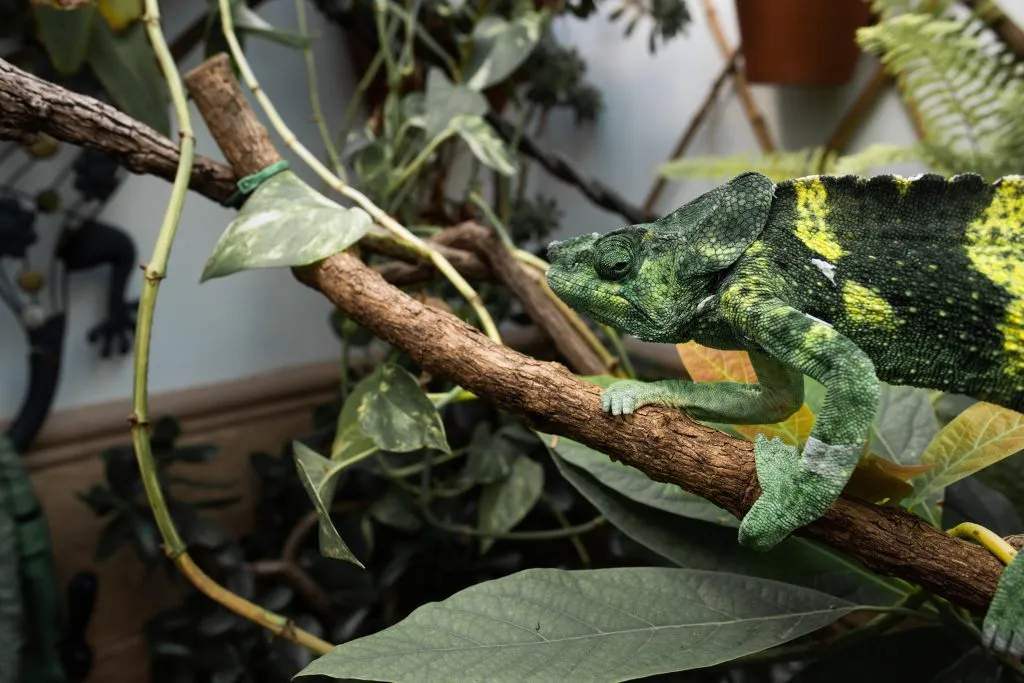
Fruits are a great way to offer both hydration and nutrients to your chameleon at the same time and nurse it back to health in no time!
Juicy fruits like seedless watermelon, honeydew melon, peaches, strawberries, blueberries, grapes, pears, and mango, are best when trying to up your pet’s hydration levels.
Always make sure to remove all seeds, pits, and stems from the fruit and to cut each piece to roughly the size of an insect to avoid your pet accidentally choking on them.
A good rule of thumb is to never cut the pieces of fruit to a size larger than the space between your chameleon’s eyes.
After it is done eating the fruits, remember to give your chameleon a crunchy insect, like crickets or dubia roaches, to help clean up its teeth and dislodge any remains of fruits that may have been left in its mouth.
Allowing fruit leftovers to stay stuck in your chameleon’s teeth can result in tooth decay and gum disease.
Also, you should not offer fruits too often since they contain sugar, and this could be bad for your chameleon in the long term.
Tip: Not all chameleons eat fruits. Panther chameleons, for example, only eat insects.
4. Adding Some Electrolytes To The Drinking Water
If you are worried plain water may not be enough for your chameleon, you can try adding some electrolytes to it to boost your pet’s hydration.
Safe drinks for your pet that are rich in electrolytes include watermelon juice and coconut water. In case of emergency, a sugar-free sports drink that does not have a lot of added colorants and artificial flavors may be used instead.
You just have to make a 1:1 dilution of the electrolyte-rich drink of your choice plus water. This means mixing one part of the electrolyte solution with the same amount of water.
5. Using A Dropper To Give Liquids To Your Chameleon
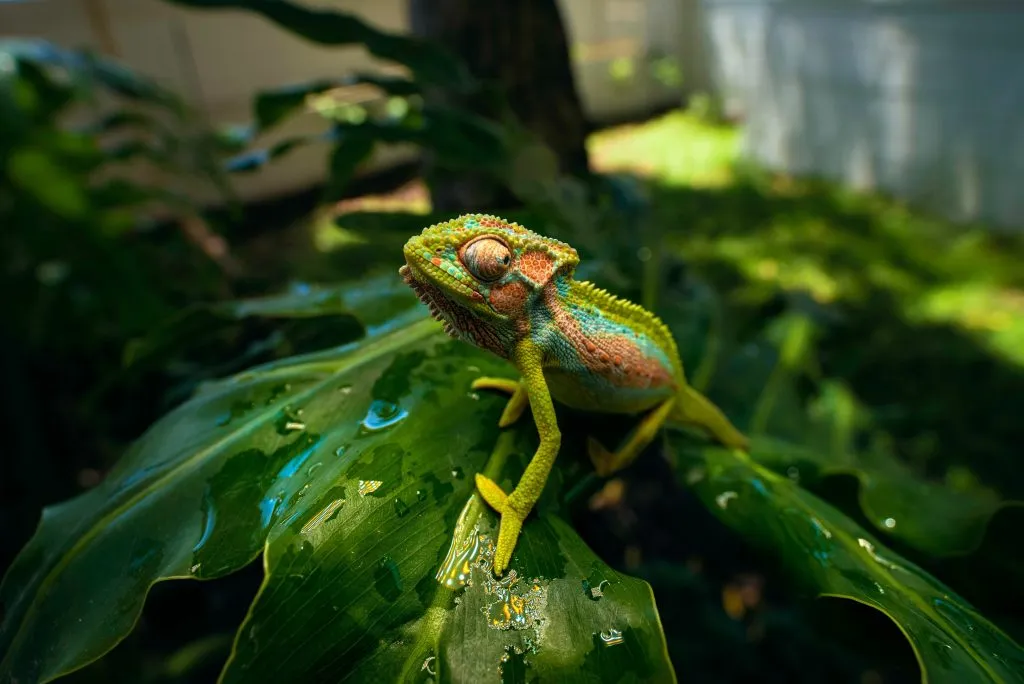
If your pet does not seem to want to drink willingly, then you can try giving it some plain water or electrolyte water using a dropper or a pipette like this one.
If you do not know how to make a safe-electrolyte drinking solution for your pet, please read the section above called “Adding Some Electrolytes To The Water”.
When using a dropper or pipette, always make sure they are made of soft plastic. Never use one made of glass as your chameleon may accidentally close its jaws and get hurt by broken glass.
Once you get your dropper or pipette already filled and ready, offer your chameleon droplets from it.
If your pet is refusing to drink then you can gently get it to open its mouth and release a few droplets into its mouth. Repeat this process as many times as necessary.
Do not try to do it quickly or to put a lot of droplets in your chameleon’s mouth at once, since doing so may result in your pet choking or even accidentally drowning!
How long does it take to rehydrate a dehydrated chameleon?
This depends on how severe was your chameleon’s dehydration. In mild cases of dehydration, recovery happens more quickly than it happens in severe cases.
In any case, do not expect rehydration to happen immediately. It usually takes a few days or even a week of constant rehydration to get a chameleon’s hydration back to healthy levels.
When to take your chameleon to the vet?
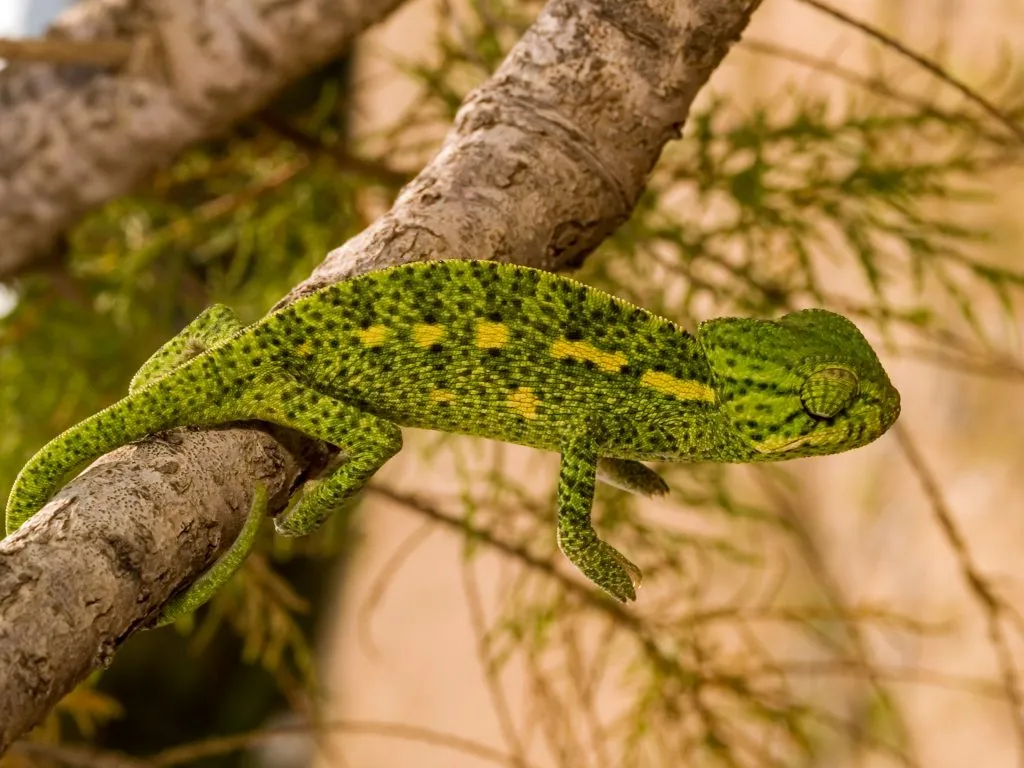
In general terms, the treatment for dehydration will vary depending on whether your chameleon is mildly or severely dehydrated.
While mildly dehydrated, the signs your pet exhibits can be very subtle and you will have to be on the lookout to prevent it from having further dehydration.
You can safely attempt to treat mild dehydration at home.
However, if your chameleon is mildly dehydrated and you see no improvement after checking all the husbandry settings are correct, and after a week of trying one or more of the different rehydration methods described above, then it is time to take your pet to the reptile vet.
If, on the other side, your chameleon is severely dehydrated, signs can be very obvious. Once a chameleon has reached a state of severe dehydration, it is very difficult to nurse them back to health.
So, if at any point you notice signs of severe dehydration like orange urates, lack of energy, decreased appetite, and/or unwillingness to drink water, it is better not to attempt to treat your pet at home.
The best course of action in this situation is to take your chameleon to the reptile vet as soon as possible.
How To Prevent Dehydration In Chameleons
There is a saying that goes “prevention is better than cure”, and this is also true for your chameleon’s health.
Chameleons are very unforgiving when it comes to keeping them under inappropriate husbandry conditions, so the best way to prevent them from getting dehydrated is to make sure every aspect of the enclosure and husbandry conditions are correct.
We know that sometimes you won’t be able to look out for your chameleon all day long, so, to make things easier for both you and your pet, you can use some natural aids and even automatic devices to help you keep appropriate temperature and humidity levels in the enclosure.
Some of the things you can rely on to help you keep proper husbandry conditions for your pet include:
Placing Real Plants In The Enclosure
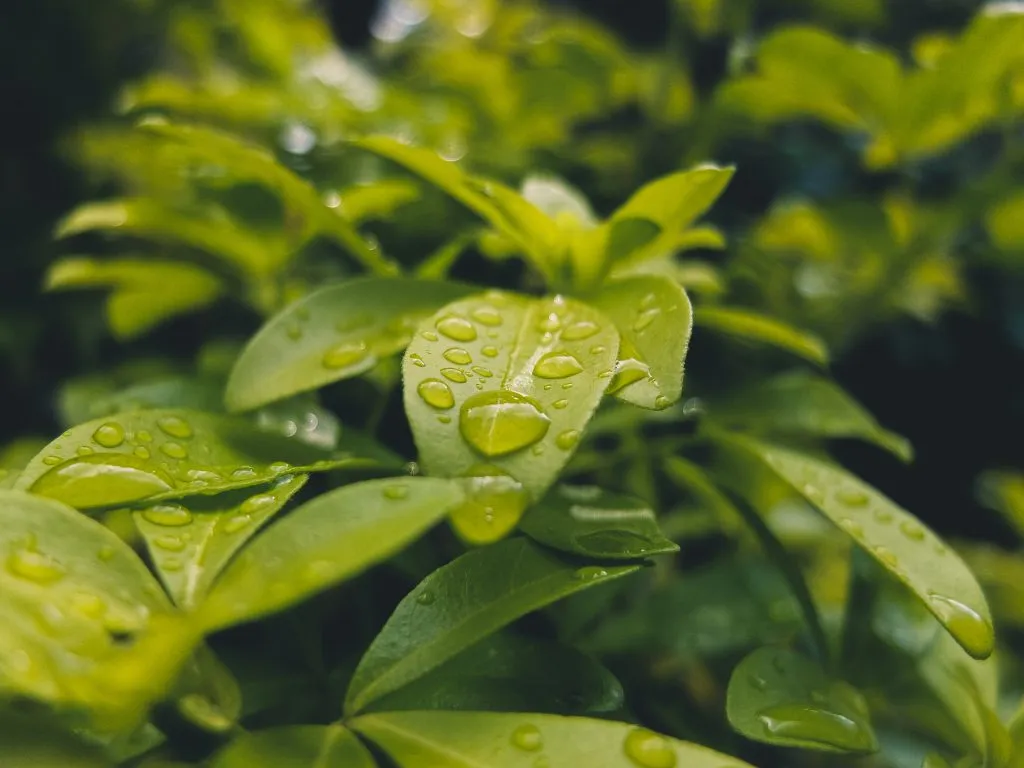
Even though they need more care and maintenance, real plants are better than fake ones to help achieve and maintain appropriate humidity levels in the enclosure.
Besides, the leaves of real plants are better to hold water longer than synthetic ones do, so your chameleon will have more opportunities to drink from them before the droplets eventually evaporate.
Good options include grape ivy, golden pothos, wandering jew, Boston fern, dragon tree, corn plant, hibiscus, and Swiss cheese plants, among others.
Using A Hygrometer
Having a good-quality hygrometer is essential to accurately measure the humidity levels inside your chameleon’s enclosure.
You need to check it every day to make sure everything is in order and make adjustments as necessary.
A great option is this one from REPTI ZOO which also measures the temperature inside the enclosure.
Setting Up An Automatic Mister Or Fogger
Devices like an automatic mister or fogger are the easiest way to provide a continuous source of water for your chameleon.
You just need to make sure to keep the device clean so it does not accidentally supply contaminated water to your pet.
Good options include this one from Evergreen Pet Supplies or this one from COOSPIDER.
- Eastern Rat Snake: Nature’s Pest Control and Fascinating Reptile - September 20, 2024
- Eastern Racer: The Fast and Agile Snake - September 19, 2024
- The Eastern Indigo Snake: The Majestic, Non-Venomous Hunter of the Southeast - September 18, 2024
